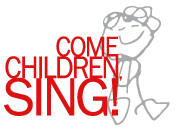Your child’s journey toward tunefulness and rhythmicity is affected by a number of musical forces. As with a set of blocks, your child’s ability to balance these forces may be strong with two, becoming less secure with another, and falling apart with more. The musical blocks are of different shapes, sizes, and weights and any of these musical forces can “block” your child’s rhythmic and tuneful performance. Which block is on the bottom makes a difference, as does how one block is placed upon another. Sometimes your little one can create a “sound structure,” other times, not.
The foundation block is rhythm, with tonal next in line. The combination of these forces is less stable, and your child is likely stronger with one than the other. Words can topple any musical structure, as language is such a dominant force in your child’s life that it too often becomes the foundation block.
Your child is also trying to master his primary musical instruments—his voice and body. Just as it takes time for your little one to learn to manipulate a toy truck that rolls, turns, and backs up, with an arm that digs, hauls, and dumps, it takes time to learn to manipulate the complex musical instruments of the voice and body.
Your child is also in the process of exploring one more musical force—his own artistry. Your little one’s musical imagination is blooming into greater wonder. Hammers, trucks or pom pons can entice your little one to “lose himself” in “Playing Music.” The growing musical imagination entices that little musician to “lose himself” in the music itself—to be in the middle of the soundscape, like a kite in the wind, moved by the power of compelling rhythms, the drama of melodic lines, and the artistic interaction between rhythm, melody and words.
Your little one’s growing skill with rhythm and tonal, greater command of body and voice, and developing artistry will eventually come together, with the inclusion of words, into a very sturdy structure—your child’s musicianship.
|

